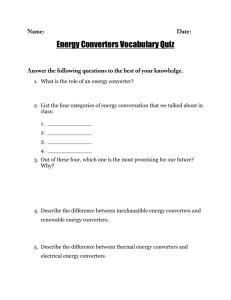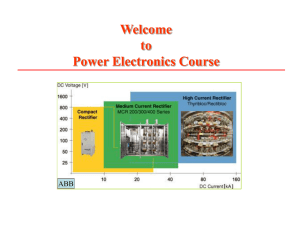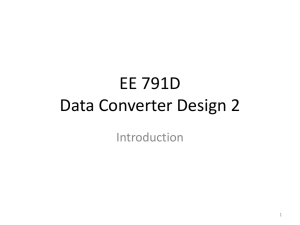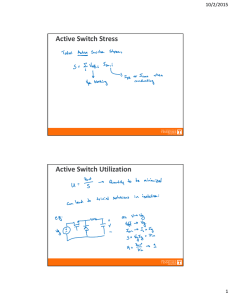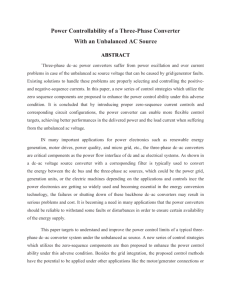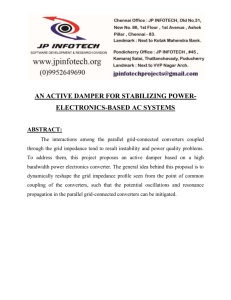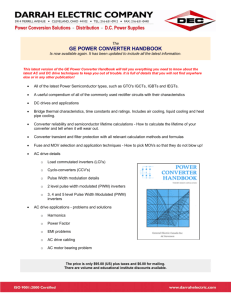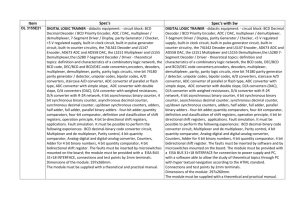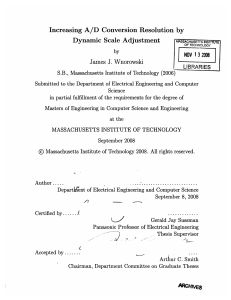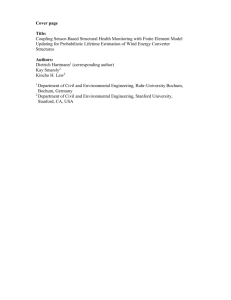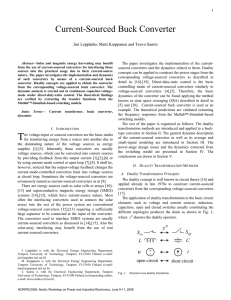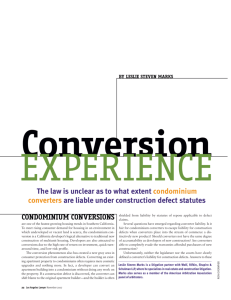CR47 with images29 PDF
advertisement
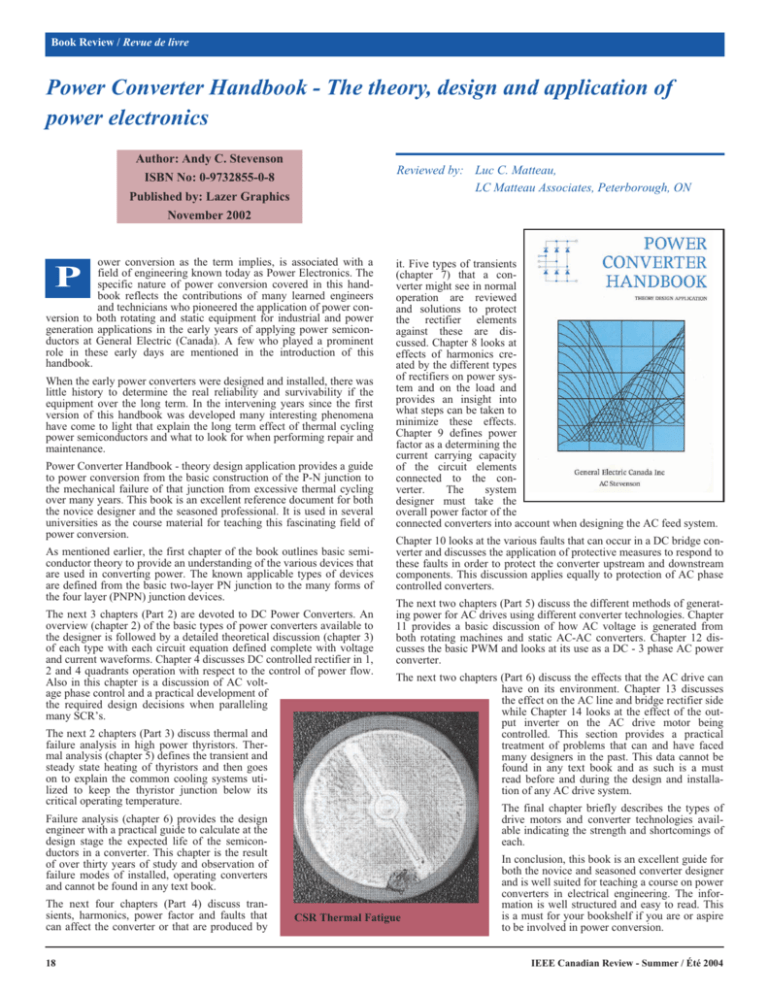
Book Review / Revue de livre Power Converter Handbook - The theory, design and application of power electronics Author: Andy C. Stevenson Reviewed by: Luc C. Matteau, LC Matteau Associates, Peterborough, ON ISBN No: 0-9732855-0-8 Published by: Lazer Graphics November 2002 ower conversion as the term implies, is associated with a field of engineering known today as Power Electronics. The specific nature of power conversion covered in this handbook reflects the contributions of many learned engineers and technicians who pioneered the application of power conversion to both rotating and static equipment for industrial and power generation applications in the early years of applying power semiconductors at General Electric (Canada). A few who played a prominent role in these early days are mentioned in the introduction of this handbook. P When the early power converters were designed and installed, there was little history to determine the real reliability and survivability if the equipment over the long term. In the intervening years since the first version of this handbook was developed many interesting phenomena have come to light that explain the long term effect of thermal cycling power semiconductors and what to look for when performing repair and maintenance. Power Converter Handbook - theory design application provides a guide to power conversion from the basic construction of the P-N junction to the mechanical failure of that junction from excessive thermal cycling over many years. This book is an excellent reference document for both the novice designer and the seasoned professional. It is used in several universities as the course material for teaching this fascinating field of power conversion. As mentioned earlier, the first chapter of the book outlines basic semiconductor theory to provide an understanding of the various devices that are used in converting power. The known applicable types of devices are defined from the basic two-layer PN junction to the many forms of the four layer (PNPN) junction devices. The next 3 chapters (Part 2) are devoted to DC Power Converters. An overview (chapter 2) of the basic types of power converters available to the designer is followed by a detailed theoretical discussion (chapter 3) of each type with each circuit equation defined complete with voltage and current waveforms. Chapter 4 discusses DC controlled rectifier in 1, 2 and 4 quadrants operation with respect to the control of power flow. Also in this chapter is a discussion of AC voltage phase control and a practical development of the required design decisions when paralleling many SCR’s. The next 2 chapters (Part 3) discuss thermal and failure analysis in high power thyristors. Thermal analysis (chapter 5) defines the transient and steady state heating of thyristors and then goes on to explain the common cooling systems utilized to keep the thyristor junction below its critical operating temperature. it. Five types of transients (chapter 7) that a converter might see in normal operation are reviewed and solutions to protect the rectifier elements against these are discussed. Chapter 8 looks at effects of harmonics created by the different types of rectifiers on power system and on the load and provides an insight into what steps can be taken to minimize these effects. Chapter 9 defines power factor as a determining the current carrying capacity of the circuit elements connected to the converter. The system designer must take the overall power factor of the connected converters into account when designing the AC feed system. Chapter 10 looks at the various faults that can occur in a DC bridge converter and discusses the application of protective measures to respond to these faults in order to protect the converter upstream and downstream components. This discussion applies equally to protection of AC phase controlled converters. The next two chapters (Part 5) discuss the different methods of generating power for AC drives using different converter technologies. Chapter 11 provides a basic discussion of how AC voltage is generated from both rotating machines and static AC-AC converters. Chapter 12 discusses the basic PWM and looks at its use as a DC - 3 phase AC power converter. The next two chapters (Part 6) discuss the effects that the AC drive can have on its environment. Chapter 13 discusses the effect on the AC line and bridge rectifier side while Chapter 14 looks at the effect of the output inverter on the AC drive motor being controlled. This section provides a practical treatment of problems that can and have faced many designers in the past. This data cannot be found in any text book and as such is a must read before and during the design and installation of any AC drive system. The final chapter briefly describes the types of drive motors and converter technologies available indicating the strength and shortcomings of each. Failure analysis (chapter 6) provides the design engineer with a practical guide to calculate at the design stage the expected life of the semiconductors in a converter. This chapter is the result of over thirty years of study and observation of failure modes of installed, operating converters and cannot be found in any text book. The next four chapters (Part 4) discuss transients, harmonics, power factor and faults that can affect the converter or that are produced by 18 CSR Thermal Fatigue In conclusion, this book is an excellent guide for both the novice and seasoned converter designer and is well suited for teaching a course on power converters in electrical engineering. The information is well structured and easy to read. This is a must for your bookshelf if you are or aspire to be involved in power conversion. IEEE Canadian Review - Summer / Été 2004
